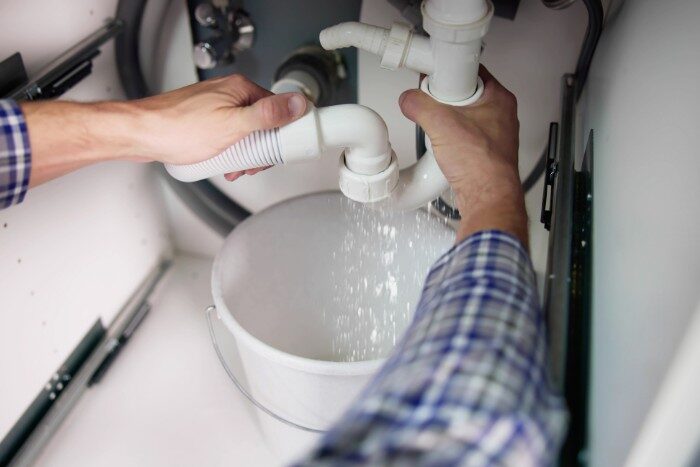
Low Water Landscaping: Solutions for Tech Enthusiasts
Share
In an age where technology reigns supreme, tech professionals and enthusiasts are constantly seeking innovative ways to integrate their love for technology with sustainable practices. One such practice that is gaining traction in the tech community is low water landscaping. As we face increasing concerns about water scarcity and climate change, it's crucial for tech-savvy individuals to explore how they can contribute to water conservation efforts while enjoying the aesthetic and functional benefits of landscaping.
With the increasing prevalence of smart homes and IoT devices, integrating low water landscaping into your property can be a seamless process. Not only does it save water, but it also enhances the overall efficiency and sustainability of your living environment. In this article, we'll delve into the world of low water landscaping and explore why it's a perfect fit for tech enthusiasts like you.

Understanding Low Water Landscaping
Before we dive into the specifics, let's define what low water landscaping entails. Essentially, it involves designing and maintaining outdoor spaces in a way that minimizes water usage. This approach is not only eco-friendly but also cost-effective. By employing drought-resistant plants, efficient irrigation systems, and smart landscaping techniques, you can create a beautiful and sustainable outdoor environment.
Tech enthusiasts can leverage their skills to enhance the efficiency of low water landscaping. For instance, incorporating smart irrigation systems that adjust watering schedules based on weather conditions can significantly reduce water waste. Additionally, using data-driven insights to optimize plant selection and placement ensures that your landscaping efforts are both effective and efficient.
Integrating Technology into Landscaping
One of the most exciting aspects of low water landscaping for tech enthusiasts is the ability to integrate technology into the process. IoT devices, sensors, and automated systems can play a pivotal role in optimizing water usage and maintaining a lush landscape. Here are some ways technology can be seamlessly integrated into your landscaping efforts:
Smart Irrigation Systems
Smart irrigation systems are a game-changer when it comes to low water landscaping. These systems use sensors and weather data to determine the optimal watering schedule for your plants. By avoiding overwatering and adjusting for rainfall, you can ensure that every drop of water counts. Learn more about business water usage reduction and how similar strategies can be applied to residential landscaping.
Drought-Resistant Plants
Choosing the right plants is essential for any successful low water landscaping project. Drought-resistant plants are specifically adapted to thrive in arid conditions, requiring minimal water to flourish. Tech enthusiasts can use data analytics to determine the best plant species for their specific climate and soil conditions, ensuring a thriving landscape with minimal water usage.
Data-Driven Landscaping
For tech enthusiasts, data is king. By collecting and analyzing data on soil moisture levels, weather patterns, and plant health, you can make informed decisions about your landscaping efforts. This data-driven approach allows for precision and efficiency, ensuring that your low water landscaping project is both sustainable and visually appealing.
Discover more about water sustainability strategies and how they can be applied to your landscaping efforts.
The Benefits of Low Water Landscaping
Now that we've explored how technology can enhance low water landscaping, let's delve into the numerous benefits it offers to tech professionals and enthusiasts:
Environmental Impact
One of the most significant advantages of low water landscaping is its positive impact on the environment. By reducing water consumption, you contribute to the preservation of this precious resource and help mitigate the effects of climate change. Additionally, the use of native and drought-resistant plants promotes biodiversity and supports local ecosystems.
Cost Savings
Tech enthusiasts understand the value of efficiency, and low water landscaping delivers just that. By minimizing water usage, you can significantly reduce your water bills. Moreover, the low maintenance requirements of drought-resistant plants mean you'll spend less on landscaping upkeep, freeing up resources for other tech projects.
Learn how water conservation tips can lead to significant cost savings in your landscaping endeavors.
Increased Property Value
Investing in low water landscaping can also boost your property's value. A well-designed and sustainable landscape enhances curb appeal and attracts potential buyers who value eco-friendly features. For tech-savvy homeowners, this can translate into a higher resale value and a more attractive investment.
Getting Started with Low Water Landscaping
If you're ready to embark on your low water landscaping journey, here are some steps to get you started:
Assess Your Space
Begin by assessing your outdoor space. Consider factors such as climate, soil type, and sunlight exposure. This information will guide your plant selection and landscaping design, ensuring that your efforts are tailored to your specific environment.
Plan Your Design
Once you've assessed your space, it's time to plan your landscaping design. Consider the layout, plant selection, and irrigation system. Tech enthusiasts can use design software and data analytics tools to create a detailed and efficient plan.
Implement Smart Solutions
As you implement your low water landscaping project, be sure to incorporate smart solutions such as automated irrigation systems and data-driven plant care. These technologies will ensure that your landscape remains beautiful and sustainable over time.
Explore the advantages of dual flush toilets for additional water-saving solutions within your home.

FAQ
What is low water landscaping?
Low water landscaping involves designing outdoor spaces to minimize water usage through the use of drought-resistant plants, efficient irrigation systems, and smart landscaping techniques.
How can tech enthusiasts benefit from low water landscaping?
Tech enthusiasts can leverage technology such as smart irrigation systems, data-driven landscaping, and IoT devices to enhance the efficiency and sustainability of their low water landscaping efforts.
What are the environmental benefits of low water landscaping?
Low water landscaping positively impacts the environment by conserving water, promoting biodiversity, and supporting local ecosystems, making it an eco-friendly choice for tech-savvy individuals.
